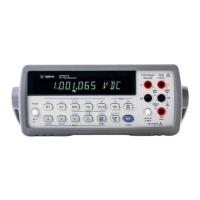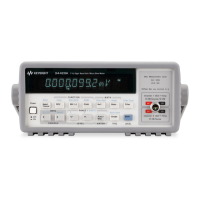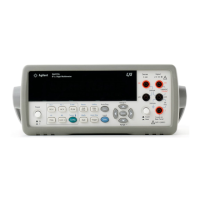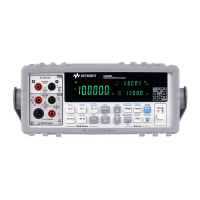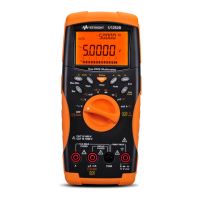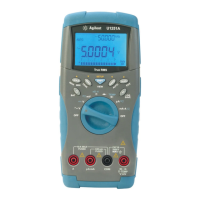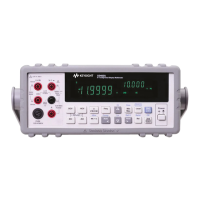Chapter 6 Command Reference 237
SSAC, SSDC
SSAC, SSDC
Sub-Sampling. Configures the multimeter for sub-sampled voltage
measurements (digitizing). The SSAC function measures only the AC component
of the input waveform. The SSDC function measures the combined AC and DC
components of the waveform. Otherwise, the two functions are identical. The
input signal must be periodic (repetitive) for sub-sampled measurements.
Sub-sampled measurements use the track/hold circuit (2 nanoseconds aperture)
and a wide bandwidth input. path (12 MHz bandwidth).
Syntax SSAC [max._input] [,% resolution]
SSDC [max._input] [,%_resolution]
max._input
Selects the measurement range (you cannot use autorange for sub-sampled
measurements). To select a range, you specify max._input as the input signal's
expected peak amplitude. The multimeter then selects the correct range. The
following table shows the max._input parameters and the ranges they select.
Power-on max._ input = not applicable.
Default max._input = 10V.
% resolution
Is ignored by the multimeter when used with the SSAC or SSDC command. This
parameter is allowed in the command syntax to be consistent with the other
function commands (FUNC, ACI, DCV, etc.).
Remarks • Autozero and autorange do not function for sub-sampled measurements.
Executing the SSAC or SSDC command suspends autozero and autorange
operation.
• As with direct-sampling, you can specify a level triggering voltage up to 500%
of the range. The required SINT format, however, cannot handle samples greater
then 120% of range.
• If reading memory is disabled when you execute the SSAC or SSDC command,
the multimeter automatically sets the output format to SINT (the memory format
max._input
Parameter
Selects
Range
Full
Scale
0 to .012 10mV 12mv
>.012 to .120 100mV 120mV
>.120 to 1.2 1V 1.2V
>1.2 to 12 10V 12V
>12 to 120 100V 120V
>120 to 1E3 1000V 1050V
